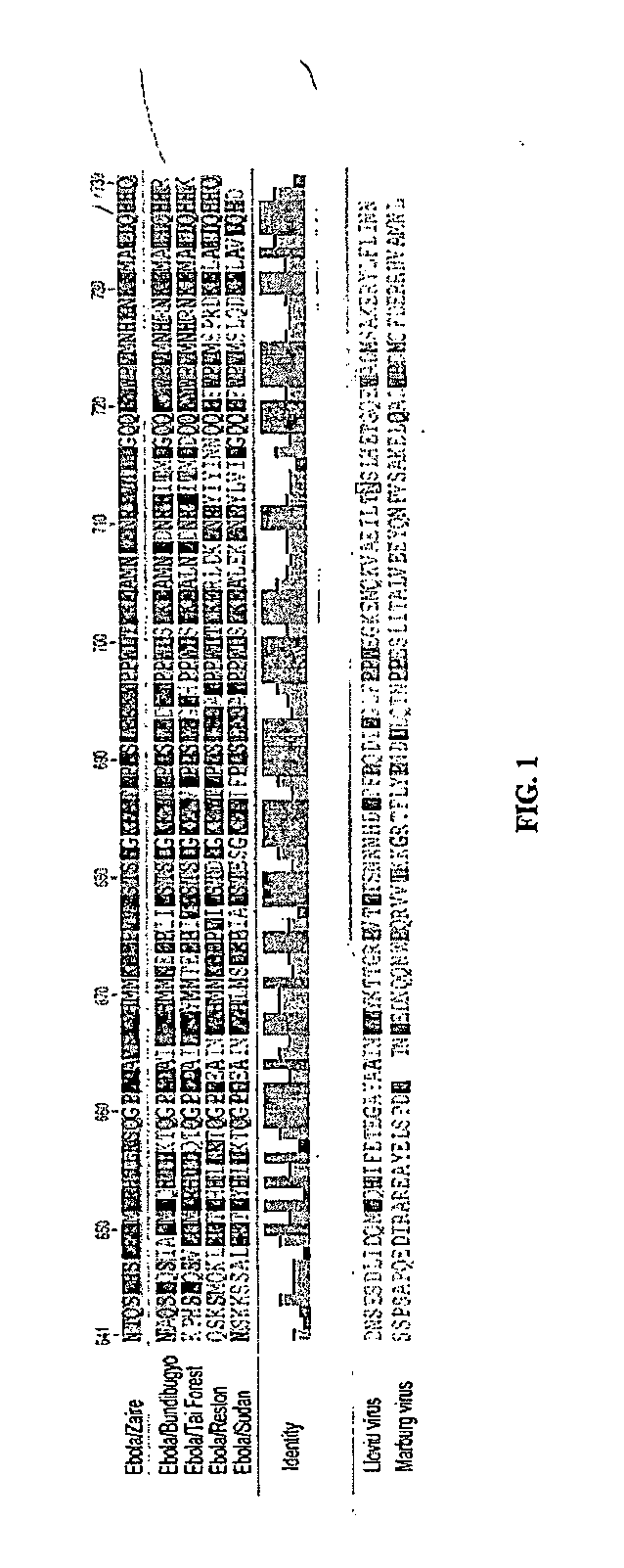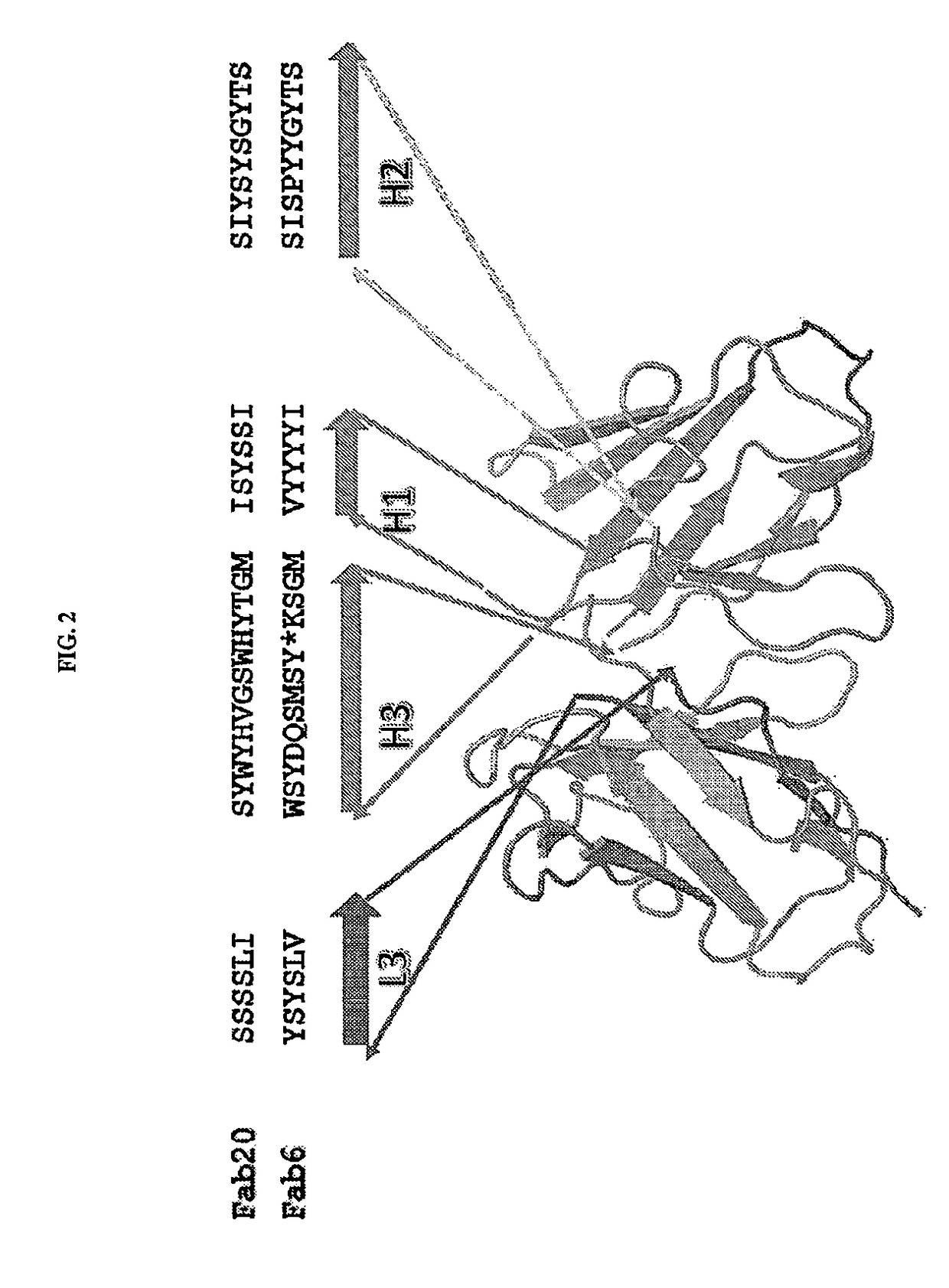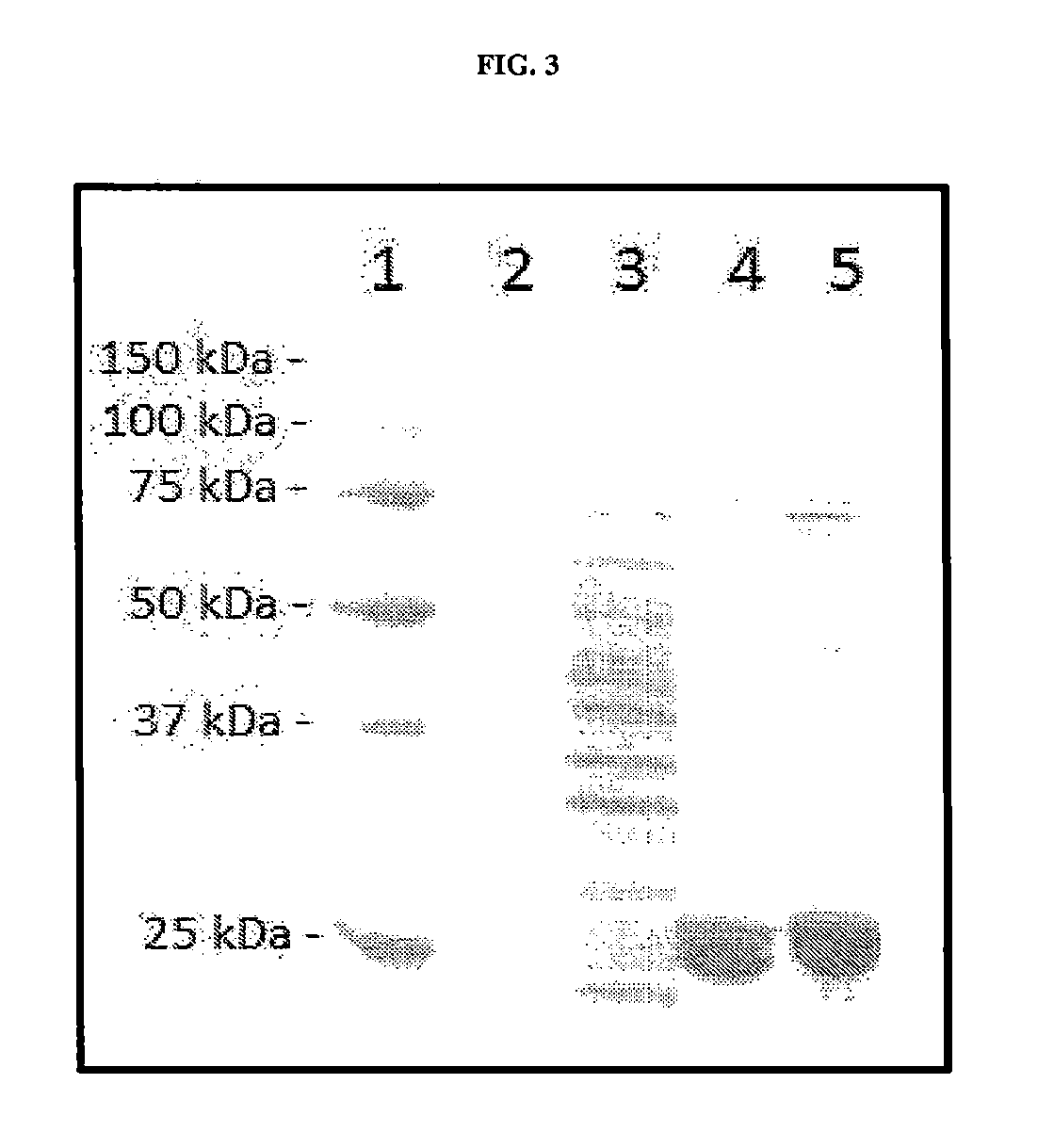Recombinant antibodies that recongnize the c-terminal domains of ebola virus nucleoprotein
a technology of ebola virus and c-terminal domain, which is applied in the field of recombinant antibodies that recongnize the c-terminal domain of ebola virus nucleoprotein, can solve the problems of limited incentive for the development of effective vaccines, therapeutics and diagnostics, and the figure most likely underestimates the real spread of the epidemi
- Summary
- Abstract
- Description
- Claims
- Application Information
AI Technical Summary
Benefits of technology
Problems solved by technology
Method used
Image
Examples
example 1
and Methods
[0252]A. In Silico Sequence Analyses
[0253]Secondary-structure and tertiary-structure predictions, as well as disorder predictions, were carried out using the Jpred (Cole et al., 2008; Cuff et al., 1998), Phyre2 (Kelley & Sternberg, 2009), EMBOSS (Rice et al., 2000), GlobPlot (Linding et al., 2003) and DisMeta (Huang et al., 2014) servers. Amino-acid sequence conservation was analyzed using Geneious (http: / / www.geneious.com) and ConSurf (Ashkenazy et al., 2010).
[0254]B. Preparation of Protein Samples
[0255]The open-reading frames from five Ebola virus strains (i.e., Zaire, Bundibugyo, Tai Forest, Sudan, and Reston) and Marburg virus were optimized for E. coli expression and, amplified by Polymerase Chain Reaction (PCR). PCR primers were designed for seamless recombinase-assisted cloning, which contained approximately 15-nucleotide complementary sequence to the flanking regions of the open vector, used according to the manufacturer's recommendations. PCR products were separa...
example 2
ation of Folded Domains in Zaire EBOV NP
[0286]Nucleoproteins (NPs) of Filoviridae are significantly longer than those of other members of Mononegavirales with Zaire EBOV NP containing about 739 amino acids. There is evidence that this architecture is owing to the presence of two distinct modules, a C-terminal protein domain and a N-terminal protein domain.
[0287]Genomic characterization of the Ebola virus genome and the Nucleoprotein were assessed. The hydrophobic N-terminal domain comprises about 412 amino acids (residues 1-412), and is important for self-assembly, transcription, and replication. The hydrophilic C-terminal domain comprises about 150 amino acids (residues 641-739), and is required for full formation of the Nucleocapsid and for viral genome replication. The C-terminal domain is specifically involved in the incorporation of the nucleocapsid into the virion and interaction with VP40. Nevertheless, the precise boundaries of these functional units have not been identified...
example 8
ge Display to Generate and Purify Fragment Antigen Binding Proteins
[0314]The Recombinant Antibody Network (RAN) is the largest producer of recombinant Fabs in the world. In fact, RAN has generated Fabs that were used as crystallization chaperones in numerous high-profile structural biology investigations for the determination of crystal structures of interest. Accordingly, recombinant C-terminal domains from all five strains of EBOV were provided to RAN to generate Fab using their automated phage display pipeline and the human herceptin template
[0315]Based on the NPCt domain from the Zaire EBOV, RAN generated two first generation Fabs denoted Fab6 and Fab20 (see FIG. 2). The Fabs were generated by screening for sequences in the four complementarity defining region (CDR) loops in the variable domain (see FIG. 2). Illustrative CDRs of Fab20 comprise, consist of, or consist essentially of SEQ ID NO: 35, SEQ ID NO: 145, SEQ ID NO: 43, and SEQ ID NO: 96. Illustrative CDRs of Fab6 compris...
PUM
 Login to View More
Login to View More Abstract
Description
Claims
Application Information
 Login to View More
Login to View More - R&D
- Intellectual Property
- Life Sciences
- Materials
- Tech Scout
- Unparalleled Data Quality
- Higher Quality Content
- 60% Fewer Hallucinations
Browse by: Latest US Patents, China's latest patents, Technical Efficacy Thesaurus, Application Domain, Technology Topic, Popular Technical Reports.
© 2025 PatSnap. All rights reserved.Legal|Privacy policy|Modern Slavery Act Transparency Statement|Sitemap|About US| Contact US: help@patsnap.com



